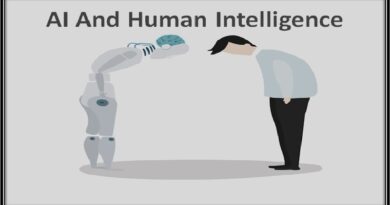Steps IT leaders can take now to get AI out of ‘pilot purgatory’
Today, almost any organization can prove AI’s capability in a non-production, innovation laboratory setting but fielding AI in real-world environments is the true test of success. Here’s a framework for closing the gap. National security is rapidly becoming a digital enterprise and winning in the digital battlefield of the future demands continued advancements in artificial intelligence (AI).
But right now, too many AI applications are stuck in the lab at the conceptual stage, and too few reach deployments in the “field” (i.e., production environments with real workloads, users, and problems). This gap is dangerous because AI improves through operationalization, learning from real-world data how to work faster and better.
The global AI race is accelerating, and if we don’t invest now in ways to scale AI more effectively, we risk falling behind. That’s why now is the time to get AI out of “pilot purgatory” and into practical implementation.
What is the role of AIOps in scaling AI?
Successfully operationalizing AI requires us to think about adoption and deployment holistically and from an enterprise perspective.
From our experience supporting over 150 federal AI projects, we have created an AI operations (AIops) engineering framework focused on the critical elements needed to overcome the post-pilot challenges of responsibly integrating AI. AIops enables the development and sustainability of AI by bringing together responsible AI development, data, algorithms, and teams into an integrated, manageable solution.
An AIops framework increases an organization’s success rate in deploying AI, helping to unlock a more scalable, sustainable, and coordinated AI capability. This framework should have several key components, including:
Mission engineering: In this critical first step, organizations define the problem they want to solve and validate if AI applies to the solution.
Responsible AI with human-centered design: These are the risk and change management activities to ensure AI solutions will meet performance requirements, organizational standards, and core values. Responsible AI is essential to AI adoption and therefore scalability.
Data operations, machine learning operations, and DevSecOps: By operationalizing data engineering, data management, and machine learning processes and applying a structured framework for integration, documentation, and automation, organizations strengthen their ability to develop, deploy, and monitor AI solutions across the enterprise.
Reliability engineering: How do you know if your AI solutions are effective in generating value and resilient to changing environments? Reliability engineering gives AI teams a quantitative, repeatable, and scalable way of monitoring deployments.
An AIops framework should also include strong technical architecture and cybersecurity policies, feedback loop(s) for learning and improving, and a cross-functional, integrated team.
Why do organizations need an AIops framework?
AIops offers many technical benefits to an organization, including the ability to rapidly deploy preconfigured AIops pipelines across environments; automated model governance, versioning, and monitoring, as well as automated processes for ingesting data; and consistent, comprehensive metadata collection.
However, many of these benefits lie on the human side, not the technical side. Because AIops is based on agile principles and more efficient resource utilization, an AIops framework supports team members working in tandem in their areas of technical expertise, with roles and responsibilities distributed across the enterprise. This improves speed, efficiency, productivity, and employee satisfaction.
In addition, AIops focuses on “explainability” to ensure people understand the outputs of AI systems and the processes behind them. This addresses the confusion or resistance people can feel with “black box” solutions. The ability to achieve quick, incremental wins further generates buy-in, helping organizations move AI from siloed projects in the lab to full-scale operationalization across the enterprise and in the field.
How can organizations put AIops into practice?
Ready to start putting the AIops framework to use? Success and scalability begin with these four steps:
- Establish your AI vision. What do you want to achieve from AI, and how does this fit within your current capabilities and overall strategic plan?
- Begin to articulate AI’s potential impact. Which goals and objectives will be influenced through integration of AI systems, and how will you measure return on investment?
- Identify your AI champions. Which employees are ready to lead AI projects? Which leaders have already bought into AI culture?
- Capitalize on quick wins. Among contenders for pilot projects, which ones are the most technically feasible, with the clearest parameters for success?
Achieving reliable, repeatable AI development and deployment is our most critical future challenge. By strategically leveraging AIops through a comprehensive, proven framework, IT leaders can close the chasm between conceptual innovation and real-world deployment, helping the U.S. stay ahead in the global race for AI supremacy.
Steve Escaravage is a senior VP and leader of Booz Allen’s analytics practice and AI services business.




